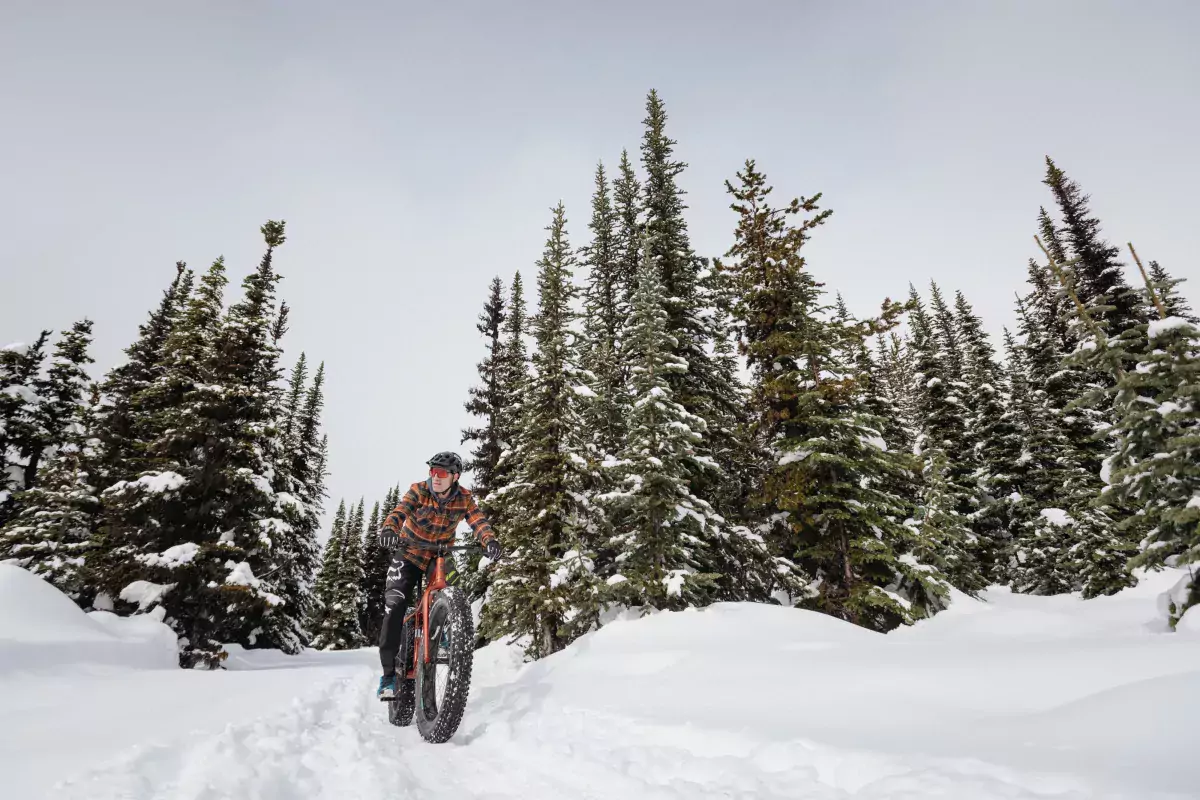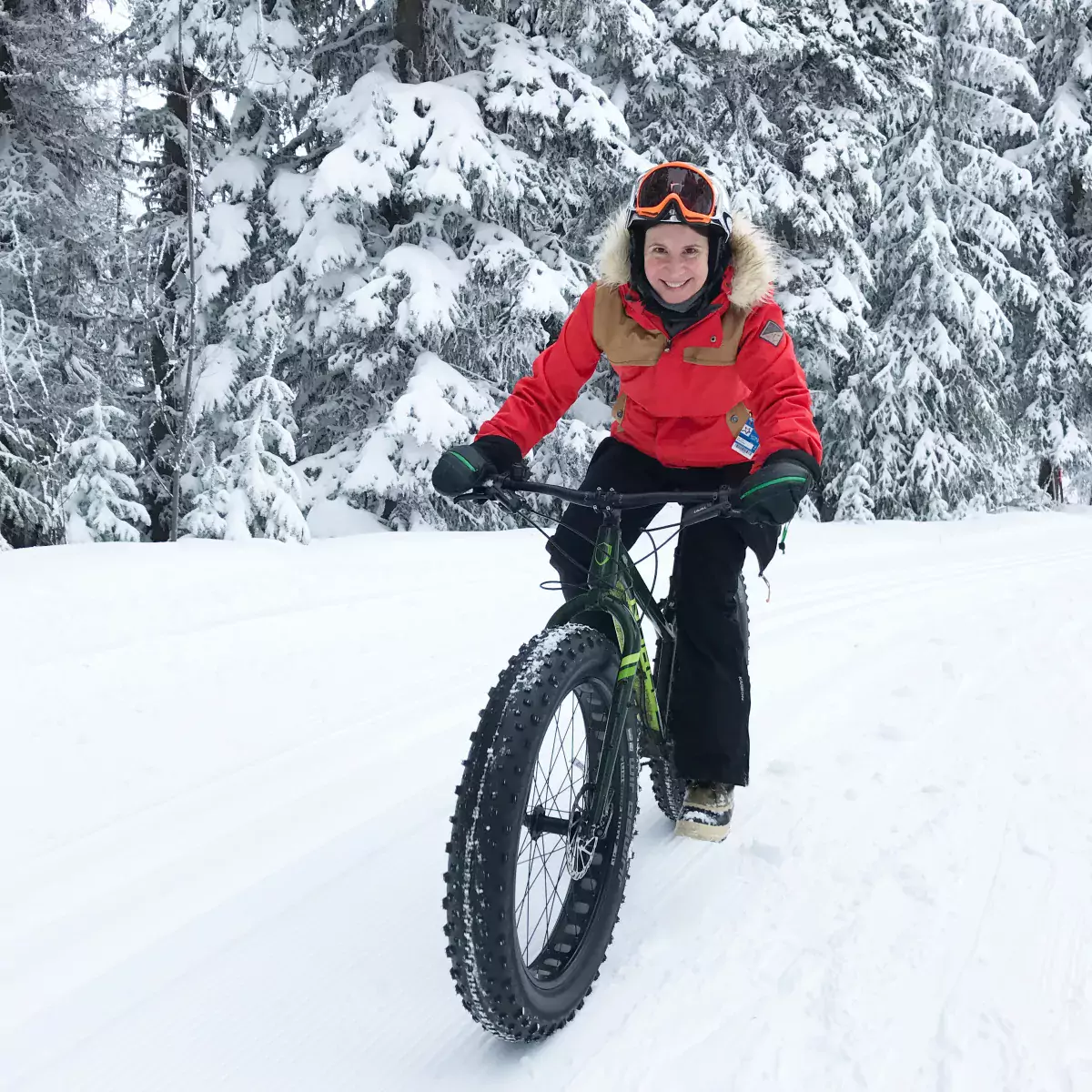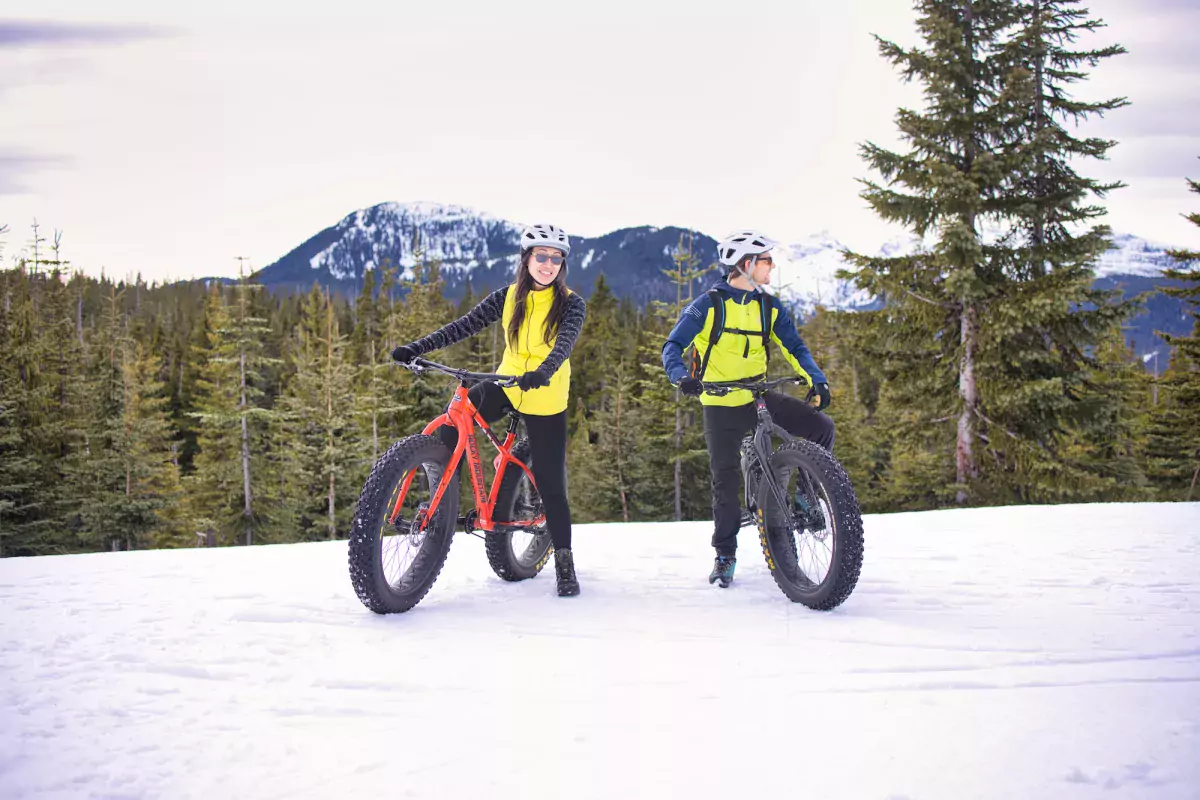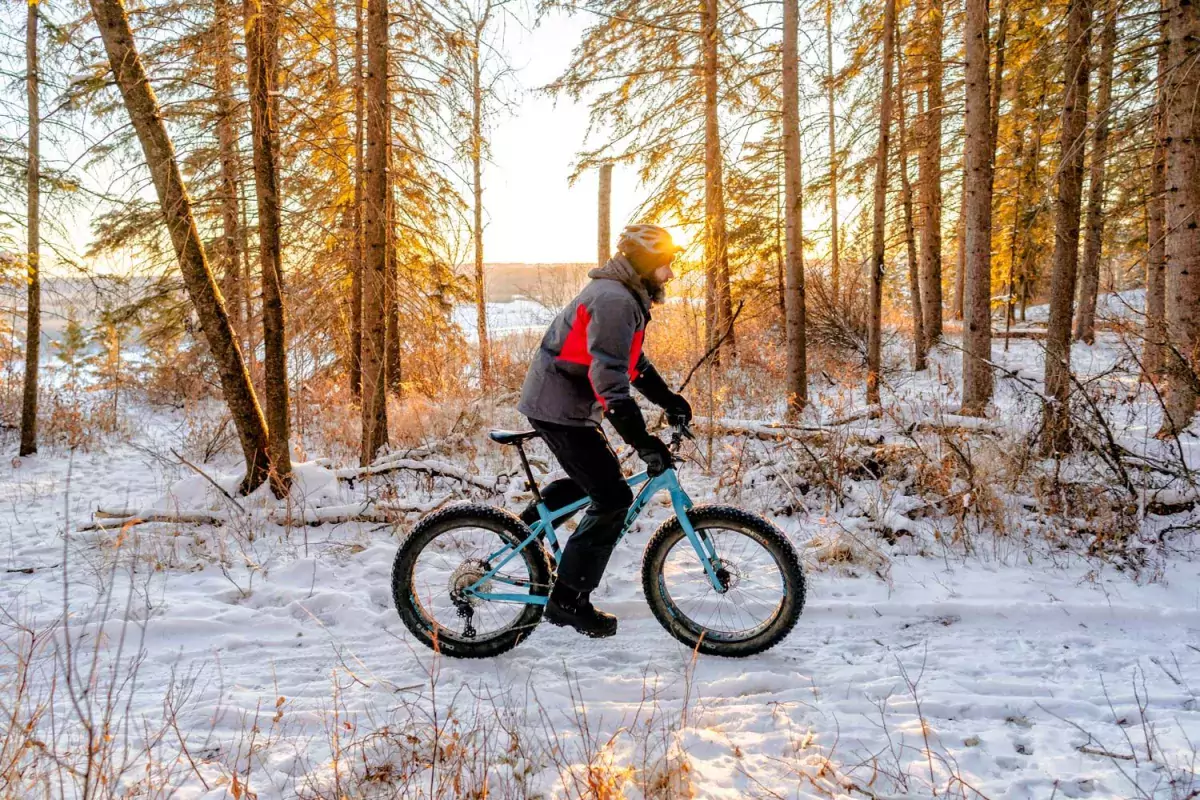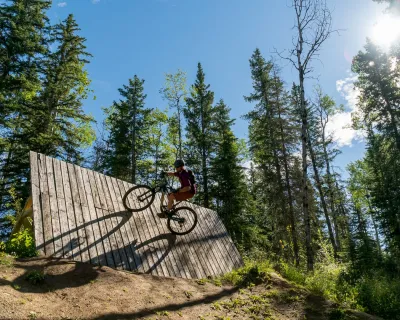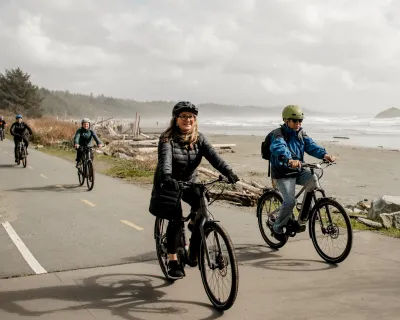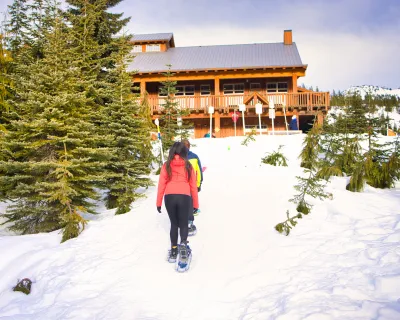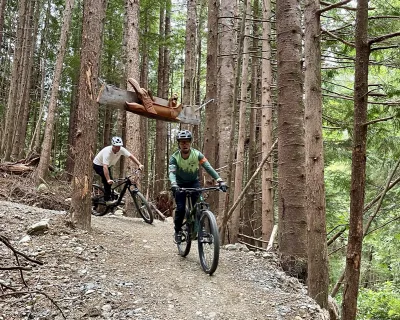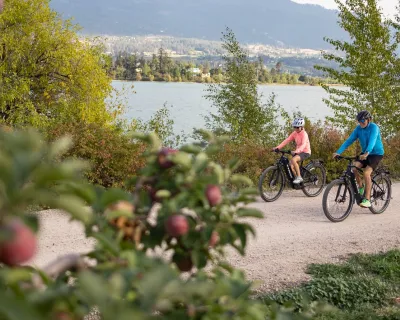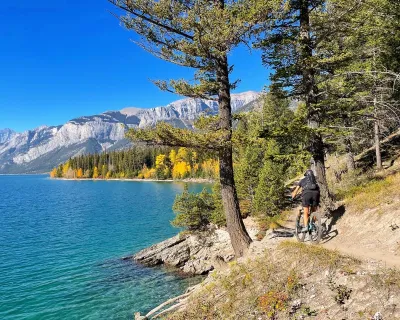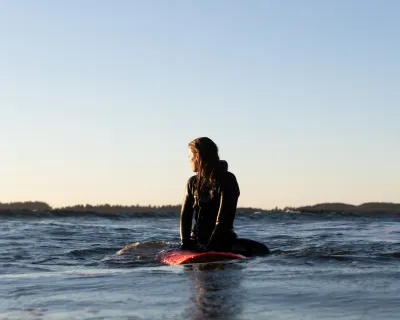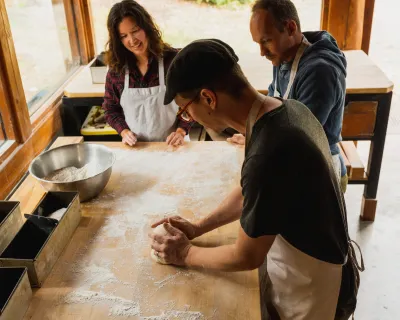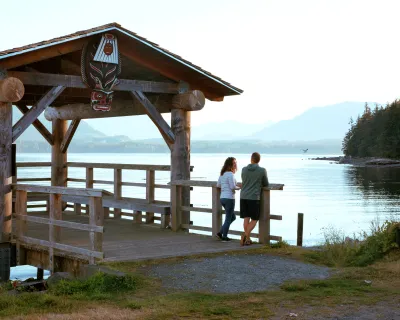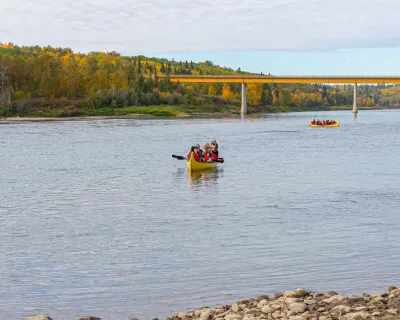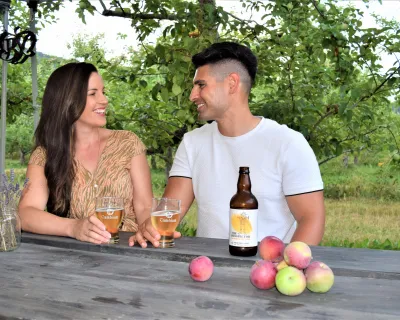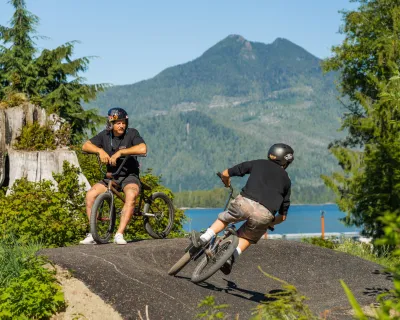How to get into Fatbiking this Winter
You may have seen them cruising around your neighbourhood or riding through the local park, thinking to yourself, "what on earth…?" Yes, fat bikes look like regular bikes, but with abnormally large tires.
If you haven't tried it, these big bulky bikes can seem unwieldy at first. But with a few simple tips on how to get into fat biking, you'll be pedalling and grinning through the winter.
Why the fat tires? The oversized treads are designed to roll over the most aggressive terrain, including snow and ice. They are the ideal way to extend your riding season and avoid spending time indoors on that dreaded trainer.
The bigger, softer tires also add another benefit. Most models have a rigid frame, as those billowing tires with their extremely low pressure act as the bike’s suspension.
However, manufacturers are also building hardtail and full-suspension models with all the latest bells and whistles. In the end, what it boils down to is the type of terrain you’ll be riding and how much you want to spend.
Supply chain issues due to the pandemic are still affecting many industries, of which the biking world is not immune. Thankfully, many local bike shops in both Alberta and B.C. are renting fat bikes, which is a fantastic way to experience the sport without the costly commitment of buying one.
Getting into fat biking
Now, if you’re going into this sport expecting the same feeling as summer riding, I am sorry to disappoint you. The wider tires, which provide more traction in the snow, are also more difficult to pedal, so the riding has a noticeably slower pace than what you’d experience on a ‘regular’ mountain bike.
How to set fat bike tire pressure for snow conditions
This is where tire pressure comes into play. For those summer rides, you can almost just set it and forget it, but in the winter, you’ll be adjusting your tire pressure to match the riding conditions.
Soft snow: for fluffy powder, choose a lower tire pressure to make the tires softer and wider to grip and absorb in the variable conditions
Hard-packed trails: choose a higher tire pressure on hard pack, much like road versus trail riding, which should allow you to move faster.
Once you’ve got this dialed, you’ll be ripping up the trails in no time!
Another difference from warm-weather riding is the clothing. You can get away with shorts and a jersey for most of your summer rides, but with colder temperatures, you’ll obviously need to cover up more. This is where the old mantra of "be bold, start cold" fits perfectly.
Dressing for fat biking
Biking in the snow is a lot of work, so if you’re all bundled up, you’ll be sweating and shedding layers in no time.
Core warmth: Layering works well as you can gear up or down as needed. If you’re familiar with Nordic skiing or ski touring, dressing similarly is a great place to start.
Find more zen with our ZenSeekers enews.
Hands and fingers: fingers are very susceptible to cold weather as you’re exposed to the elements while gripping the handle bars. Investing in good quality gloves to protect your hands is recommended or installing pogies, which are basically just insulated covers for your hands, can also keep you comfortable. I prefer gloves over mitts so I still have the finger dexterity needed for switching gears and braking.
Footwear for fat biking: For feet, a solid pair of waterproof hiking boots are more than enough to get you started. Combine them with a set of gaiters, to keep your pants out of the drivetrain and to prevent snow getting into your boots, and you’re all set.
Making sure you have the right gear
Don’t forget your bike helmet and sunglasses, or even your ski helmet and goggles on those cold, blustery days. Lastly, riding with a backpack to keep your extra layers, water, snacks, a first aid kit, spare tube and tools is also a great idea.
Once you’ve found a bike and have your clothing ready to roll, all you need is a place to go. Luckily, you won’t have to look very far to find a variety of trails that will suit all skills and abilities.
Where to go fat biking in Alberta
Once you’ve found a bike and have your clothing ready to roll, all you need is a place to go. Luckily, you won’t have to look very far to find a variety of trails that will suit all skills and abilities. In southern Alberta, West Bragg Creek, Moose Mountain, Fish Creek Park, Kananaskis Country, Banff National Park, Canmore Nordic Centre, Crowsnest Pass, and Cypress Hills all have a plethora of trails to explore.
For more winter adventure tips and travel ideas, sign up for ZenSeekers enews.
Further north, the Edmonton River Valley, Jasper National Park, and Hinton are all excellent options as well.
Where to go fat biking in BC
British Columbia has no shortage of fat bike hot spots either, including places like Fernie, Revelstoke, Golden, Invermere, Cranbrook, Kimberley, the Okanagan, and many, many more. Basically, if there’s a network of mountain biking trails, you’ll have no trouble finding something to ride in the winter.
Looking to capitalize on the latest trend, a number of winter resorts are also offering dedicated fat bike trails, coupled with rentals, for those looking for alternatives to skiing and snowboarding. SilverStar, Big White, Sun Peaks, Panorama, Fernie Alpine Resort and Mount Washington are all offering a fat biking option in addition to those more traditional winter sports.
Whether you’re looking to extend your riding season or simply want to try something new this winter, fat biking might be just what you’re looking for. Now instead of gaining pounds while hibernating this winter, you can get fat in a whole new way!
Like Our Facebook Page

